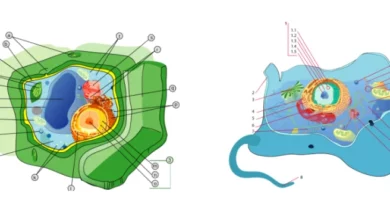They discover how one of the cell division switches works
The mitosis or cell division is regulated by the protein FoxM1. Abnormal activation of this protein is a common feature of cancer cells that correlates with a poor prognosis, metastasis, and resistance to chemotherapy.
Now, researchers at the University of California at Santa Cruz (UCSC) have determined the structure of this protein that is a master switch for cell division in its inactive conformation.
The importance of having determined the structure of this protein (FoxM1) can help to design new drugs that stabilize this protein in its inactive state and therefore control the proliferation of cancer cells .
The FoxM1 protein is a transcription factor , that is, a protein that controls the activity of specific genes. According to Seth Rubin, professor of chemistry and biochemistry at UCSC “When a cell is going to divide there are a handful of proteins that have to be synthesized, and FoxM1 controls all the genes for these proteins . “
“Because cancer cells are proliferating and dividing all the time, they need to activate FoxM1, so it has been a target for drug development.”
This study, published in the eLife journal , has been a collaboration between Rubin’s lab and Nikolaos Sogourakis assistant professor of chemistry and biochemistry. After determining the structure of this protein in the inactivated state, the research team found out how it changes from the inhibited state to its activated form.
FoxM1 protein regulates mitosis or cell division according to its phosphorylation
The study revealed that two separate domains of the FoxM1 protein interact and bind to each other in the inactivated conformation. Furthermore, it also showed that when the two domains separate and lose their structure, this protein becomes activated.
Most proteins fold into an ordered three-dimensional structure that is key to the development of their function , although some proteins function as disordered linear molecules without any particular three-dimensional structure.
The FoxM1 protein remains inactive when it is folded back on itself but becomes active when it becomes disordered and it can recruit other proteins to activate gene expression. This is something that has not been seen until now and may be a general mechanism for how transcription factors go from an inactivated form to an active form.
From previous studies, FoxM1 is known to be activated by kinase enzymes that add phosphoryl groups to specific sites on the protein . Rubin’s team found that phosphorylation of FoxM1 at a particular site caused the two domains to dissociate and that these domains lost their ordered structure.
“Knowing the structure of the protein’s inhibited state really opens up a new avenue for looking for compounds that can stabilize it,” says Rubin. “And beyond drug development, in terms of understanding how transcription factors work, the discovery of this transition from an ordered to a disordered state is a very important advance.”
To determine the structure, NMR spectroscopy was used, taking advantage of the technology available at the NMR unit at the University of California, Santa Cruz. This study was funded by the “Santa Cruz Cancer Benefit Group” as well as other grants from the NIH, the American Cancer Society, and the “Alex’s Lemonade Stand Foundation.”




